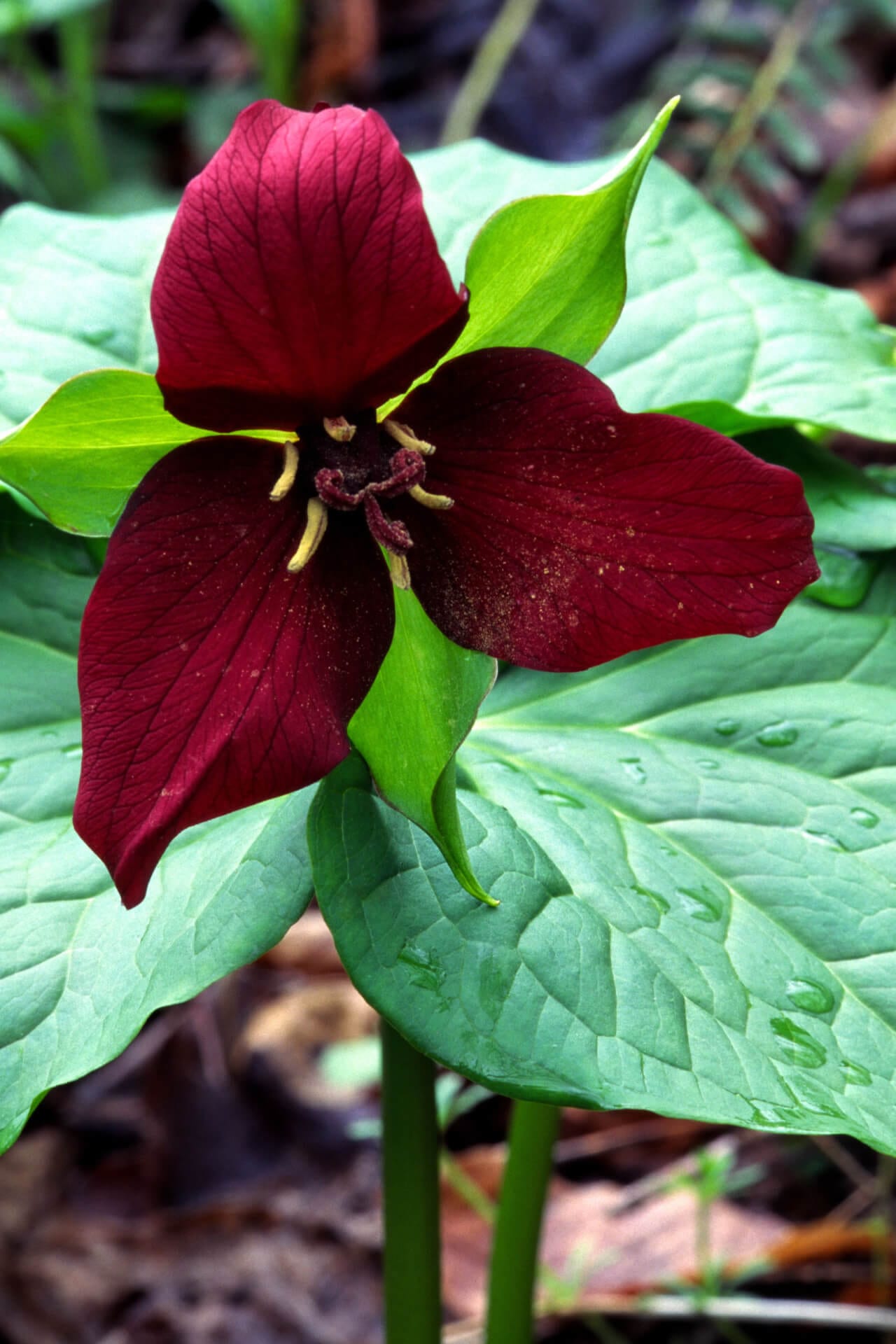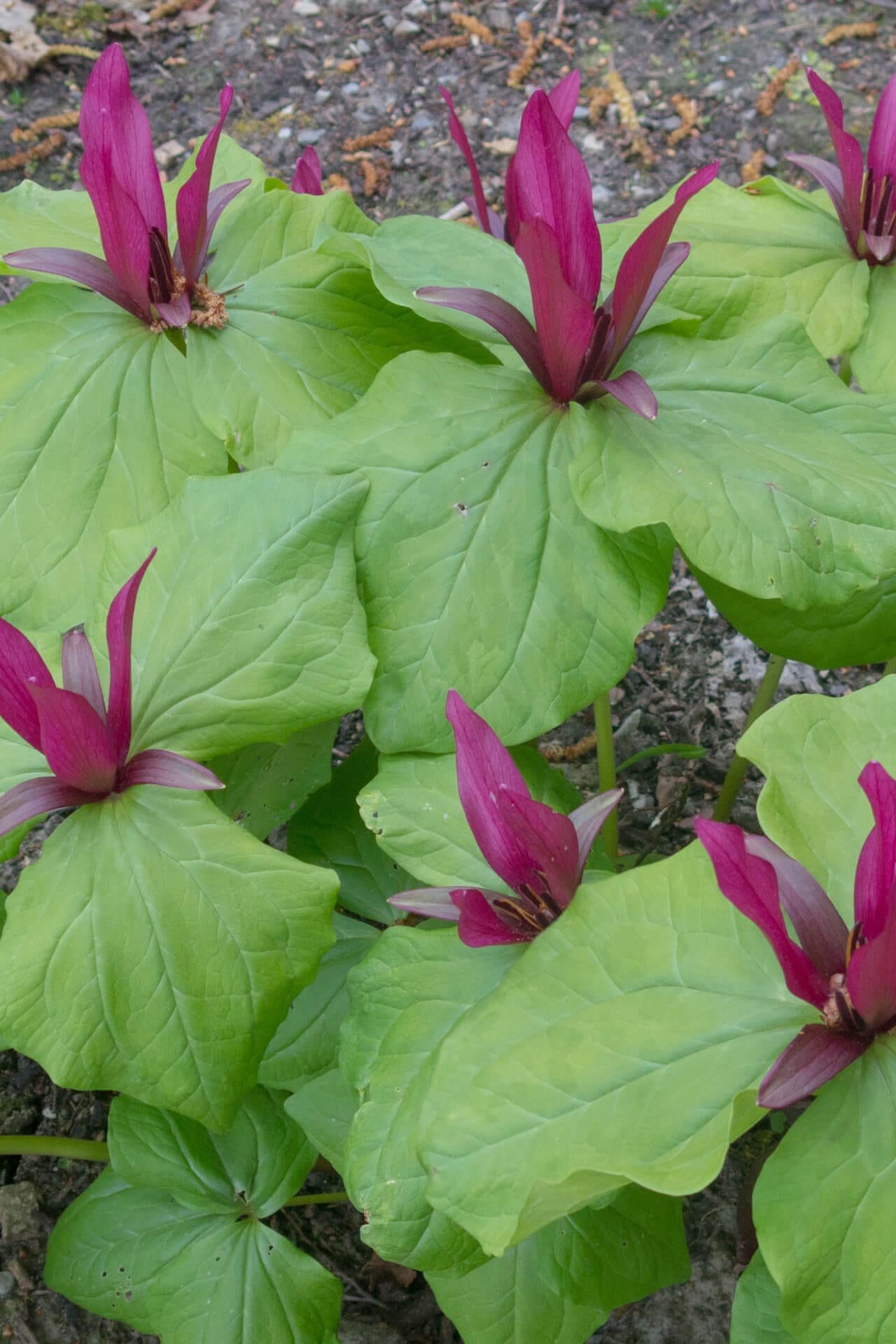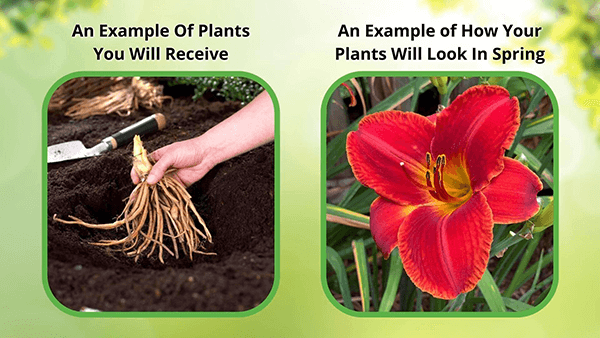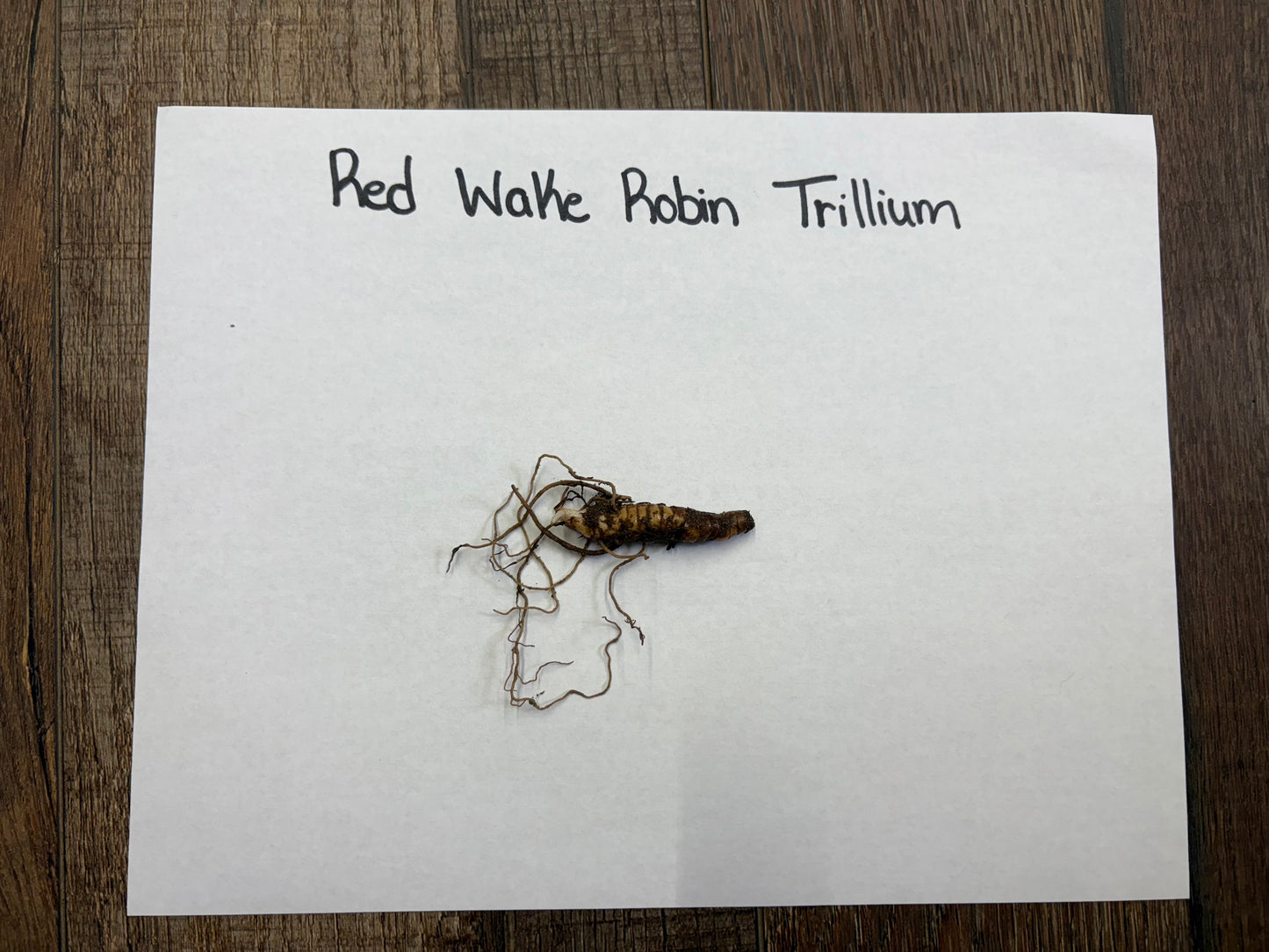Red Trillium
Couldn't load pickup availability
Ships 10-12 Days
Under 12"
Sun or Shade
4-8
Flowering
Bare-root
Trillium erectum - Red Trillium
Red Trillium is a beautiful and distinctive plant native to eastern North America. Here are some key facts and information about this fascinating plant.
Red Trillium's Appearance and Characteristics
It is a perennial plant that grows 30 to 45 centimeters tall. It has a single stem topped by a whorl of three leaves, with a single flower appearing in the center. The flower is typically a deep red, although it can sometimes be pink or white. The flower's petals are curved and pointed, giving it a distinctive shape. They bloom in early spring, typically from April to May.
Habitat and Distribution
They are most commonly found in woodland habitats, particularly in moist, rich soils. They are native to eastern North America, ranging from Nova Scotia to Georgia, and can be found in various habitats, including deciduous forests, coniferous forests, and mixed woodlands.
Uses
Native American tribes have used them for centuries for medicinal purposes. The roots and leaves were traditionally used to treat various ailments, including digestive problems, infections, and respiratory issues. The plant was also used in spiritual ceremonies to symbolize rebirth and renewal.
Gardening and Cultivation
They can be grown in gardens but require specific conditions to thrive. They prefer moist, well-drained soils with high organic content and dappled shade. They can be propagated by seed, but this can be a slow and challenging process. It is also essential to avoid over-harvesting from the wild, as this can contribute to declining natural populations. They are fascinating and beautiful plants with a rich cultural history. While they are not currently endangered, they are at risk due to habitat loss and other factors. By understanding more about this plant and its habitat, we can work to protect it and ensure that future generations can enjoy its beauty and benefits.
It is a flowering plant that also goes by the names Beth Root, Stinking Benjamin, Purple Trillium, and Wake-Robin; it is a member of the Lily family. The plant is known for having one reddish-to-purple flower on a stem that grows from eight to sixteen inches tall. The leaves of the plant can be up to seven inches long.
One distinctive trait of this plant is the unpleasant odor of the flower; some describe the aroma as reminiscent of a wet dog. This plant is easy to grow; it enjoys partial shade and moist, well-drained soil. It can grow in a sunny location as long as it's given enough water. In the spring, thoroughly cover the plant with a layer of organic matter and water throughout the growing season.
They like slightly acidic soil. As the plants spread, gardeners may want to transplant some; it's best to do this when the plant is flowering for best results. While the flowers are attractive, and it may be tempting to cut some to bring inside, refrain from doing so. The stress of having its flower cut is often too much for the plant and can cause the entire plant to die.
These Plants Can Be Grown from Seeds
However, it will take several years for the gardener to expect flowers. Cuttings allow the gardener to see results faster. Fertilizer is unnecessary as long as the plants have compost in the spring. These plants are easy to care for and grow as wildflowers in Asia and North America.
However, don't be tempted to pick them in the wild; they won't transplant well and, in some areas, are endangered; it's always best to get them from a nursery. The flowers range in color from brick red to dark burgundy.
Red Trillium has three petals and three sepals each. Its bright color and soft fragrance easily attract butterflies. This perennial plant grows between 8 and 16 inches high.
This Is How Your Plants Will Look upon Delivery
Bloom/Foliage Color
Red
Shipping date depends on the date displayed and chosen when you order from the product's page.
We do not offer warranties on products after 5 days past receiving your plants.




Delivered promptly, look healthy. Time will tell if they bloom here in IL.
Bulbs came in very healthy condition. Hope they are are a blooming success in my wildflower garden!

